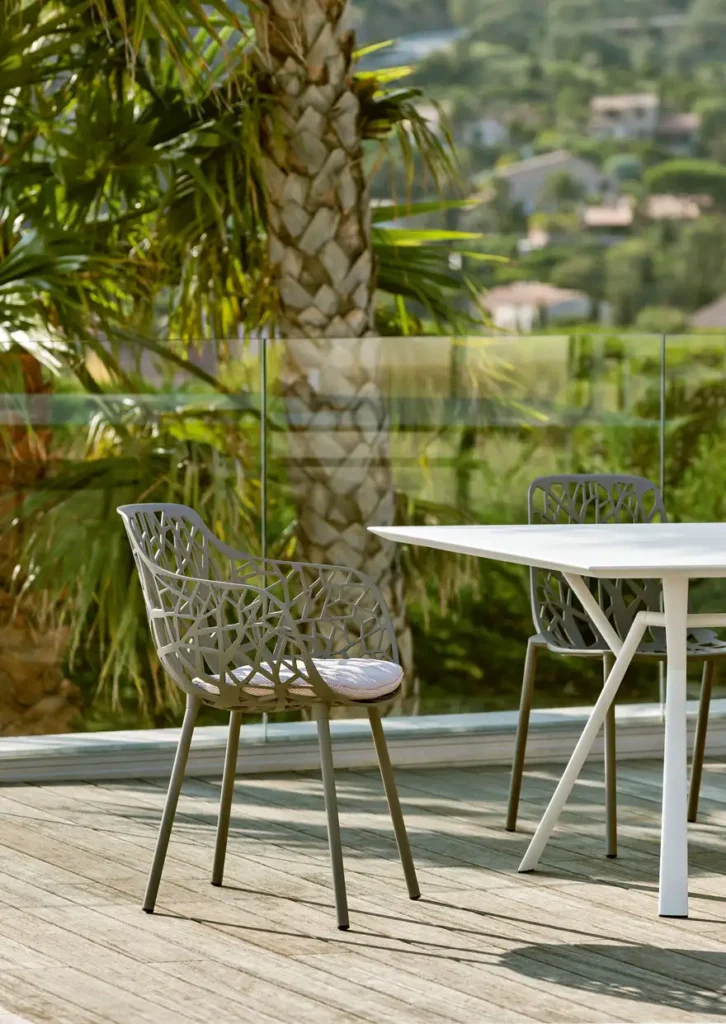06.05.23
Why Say “Yes” to Outdoor Offices?
Haworth, Hybrid Work
The shift toward hybrid work models—and a simple desire to work where we feel most comfortable—has people seeking out alternatives to traditional workspaces. Outdoor offices, outside work, and spaces that bring the outdoors in have become increasingly popular among those working at the office and at home. Places of creativity, reflection, and restoration, these outdoor and nature-inspired spaces are beneficial to both our well-being and work performance when incorporated in workplace design.
Becoming Our Best Selves
Since we spend so much of our day working, it’s important for people to work in spaces that promote happiness, health, and productivity. Being in nature brings out the best in us. There are real, positive physical changes that happen within our bodies when we live and work near a green space. According to a National Geographic article, our bodies relax in pleasant, natural surroundings because they evolved there. Our senses are adapted to interpret information about plants and streams, not traffic and high-rises.

Today’s workplace planning commonly takes into account a range of elements that affect our well-being, such as lighting, acoustics, and ergonomic furniture. But what about biophilic influences, like greenery, sunlight, nature, and water features? Workspaces designed to feature natural elements—whether outdoors or in—contribute to well-being, lowering illness and death rates, and decreasing stress hormones.
According to Florence Johnson in her book The Nature Fix, just smelling the scent of pine causes a boost to our immune systems! She goes on to say that escaping into nature just five hours every month can make you feel happier overall.
The positive influence of nature is also evident in how we work, not just how we feel. Being in and around nature can actually make you better at your job. Researchers found that walking among trees improved cognitive function, attention skills, short-term memory, and creative problem solving. Being in nature helps the brain’s default network—or imagination network—to kick in. This allows for more divergent thinking and spontaneous ideas that lead to innovation.
Activity-Based Hybrid Work Solutions
When choosing a space to work, we often look for these elements to be tailored to our preferences and how we intend to work in that space. With comfortable furniture, mobile technology, and Wi-Fi, that space can actually be outside on a patio or at an outdoor café. And some activities may not require a specific “space.” For example, a one-on-one meeting where you don’t need a screen can be a walking meeting in a local park. A conference call where you’re on mute and don’t have to present could even be taken outside—in a park, nature preserve, or at the beach, assuming your mobile data connection is strong.
Not Able to Get Outside?
While the idea of permanently working outside might appeal to some, it’s not always realistic. Not all spaces are created equal for every task, and not every workplace has a space option for outside work—or one that adjusts for a changing climate, for that matter. There are other ways to incorporate the benefits of nature while not actually being outside.
1. Open a window – Not only does this let natural air flow into a space, it has to be the most inexpensive way to add natural acoustics to a space!
2. Set up workspaces near windows to add natural lighting – Just 13-15 minutes of exposure to natural light are enough to trigger the release of endorphins or “happy hormones.”
3. Add plants – Freshen the air and add visual interest with greenery.
4. Add a changing view – Watching natural and nature-inspired elements as they move and change can help can help improve attention and performance in the workplace. Gazing through a window at outside movement, an aquarium, virtual fireplace, or even a lava lamp brings changing, natural movement into the space. Videos from websites like Window Swap can even immerse you in outdoor walking scenes from other parts of the world.
This article was originally posted on Haworth.com

